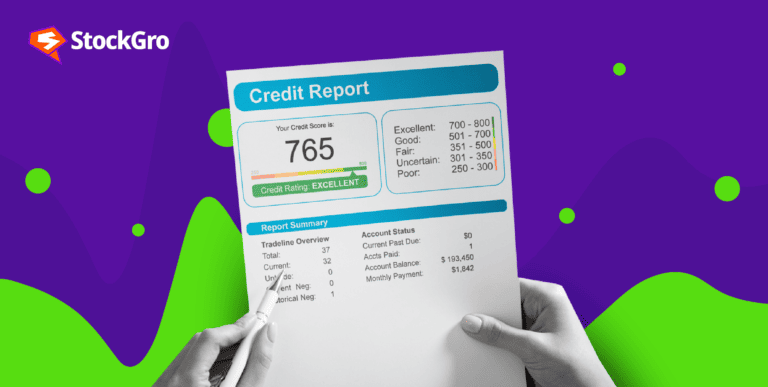
Climate change concerns and the escalating demand for a sustainable future are two prevalent challenges of the 21st century. The world of finance promises a worthwhile solution for these issues. In this scenario, sustainable finance education is gaining paramount significance. Dig deeper to discover more about this concept and figure out how environmental sustainability is linked to the financial sector.
The connection between finance and sustainability
The process of managing one’s capital to accomplish life goals is known as financial planning. It entails setting aside money for savings and making a budget for current costs. Moreover, it is about financial freedom. Though sustainability and finance are sometimes seen as distinct concepts, they are actually intrinsically related.
Keep in mind that the choices we make regarding our financial resources have a big effect on the environment. We can substantially lessen our carbon footprint and contribute to a better future by using sustainable energy sources like wind and hydroelectricity.
You may also like: Importance of financial literacy in India
Financial literacy of a net-zero lifestyle
Adopting a net-zero lifestyle allows individuals to make significant contributions towards sustainability. They produce an equivalent amount of renewable energy as their consumption, thereby achieving a balanced carbon footprint. The best eco-friendly financial practices have a crucial role in enabling a net-zero lifestyle by making conscious decisions that have long-term environmental benefits.
Budgeting to achieve a net-zero lifestyle
With proper sustainable budgeting skills, you will be able to make the financial move to bring down your overall costs. Expensive sustainable living is not a necessity. Rather, small incremental changes such as repairing items instead of replacing them can catalyse financial benefits.
With eco-friendly financial education, you will learn how to set long-term goals and a budget that supports your net-zero lifestyle. It will ensure that you can make a significant impact on the environment and achieve financial savings.
Also read: Financial freedom formula
The key principles of green financial literacy
Green finance revolves around supporting prosperity while staying within the ecological limits of the planet. This concept of green financial literacy is based on the five following principles:
- The wellbeing principle
This principle of environmental literacy programs focuses on developing a people-centred economy for everyone to enjoy genuine, shared prosperity. The idea behind this is wealth generation to support wellbeing. Therefore, The ultimate focus is on prioritising investments in sustainable natural systems.
With this particular approach toward climate-smart financial literacy, individuals can witness a rise in opportunities for decent livelihoods. Even though it is based on individual choices, this principle revolves around collective action for public goods.
- The justice principle
The purpose of sustainable money management is to promote equity between generations. Therefore, this type of financial literacy is all-inclusive and does not believe in discrimination. It concentrates on eliminating elite capture and supports equal decision-making as well as its benefits.
With an extensive focus on green investing education, promoting equitable allocation of opportunities becomes easier. Moreover, it supports the equal distribution of the positive impacts of the desired outcomes. It is an effort to reduce disparities between people with a long-term economic outlook.
The justice principle prioritises solidarity to strengthen social ties and support human rights. Moreover, it concentrates on the rights of indigenous communities and minorities for sustainable development.
- The planetary boundaries principle
This is an important aspect of environmental impact investing because it focuses on protecting and restoring nature. Moreover, it continues to develop an inclusive green economy which recognises the diverse values of nature. These values covering functional, cultural, and ecological aspects are an extensive part of green economy education.
It uses the precautionary principle to prevent the loss of vital natural capital and the infringement of ecological bounds. At the same time, the principle acknowledges the limited substitutability of natural capital with other capitals.
It makes investments in soil, water, air, biodiversity, and natural systems preservation, growth, and restoration. It is creative in the way it manages natural systems, drawing on characteristics like circularity. Moreover, the principle is in line with the livelihoods of the local people, which depend on natural systems and biodiversity.
- The efficiency and sufficiency principle
When sustainable wealth management is aligned with safeguarding the planet, it promotes balanced consumption and production. A green economy that is inclusive is circular, resource-conserving, low-carbon, and varied.
The concept welcomes novel approaches to economic growth that tackle the problem of generating prosperity within the confines of our planet. It acknowledges that for us to stay within the bounds of our planet, there needs to be a major worldwide shift toward keeping the consumption of natural resources to levels that are physically sustainable.
This focuses on a “social floor” of fundamental goods and services consumption that is necessary to meet people’s needs for wellness and dignity. Additionally, it concentrates on the inappropriate peaks of consumption.
The efficiency and sufficiency principle will always connect prices, subsidies, and incentives with the evident costs in society. It is done through mechanisms where the polluter is made to pay, and benefits are available for individuals focused on green outcomes.
- The good governance principle
Accountable and resilient institutions need to be at the forefront of promoting environmental awareness in finance. An inclusive green economy relies on empirical facts to inform its norms and institutions, which are multidisciplinary. It will utilise local knowledge for adaptive strategy in addition to strong science and economics.
It is backed by institutions that are capable of carrying out their various responsibilities in an effective, efficient, and accountable manner. These institutions are integrated, cooperative, and cohesive both vertically across governance levels and horizontally across sectors.
To ensure that societal demand complements intelligent leadership, it necessitates public engagement. Prior informed consent and democratic accountability from entrenched interests in all institutions—public, private, and civil society are also necessary.
While upholding shared standards and compliance systems, it encourages decentralised decision-making for local economies and the management of natural systems. It creates a financial system that is structured to safely advance societal goals while promoting sustainability and wellbeing.
Also read: What is financial procrastination
Ending Note
Financial literacy and green finance are crucial instruments in dealing with climate change and promoting a more sustainable future. They are interdependent, with each complementing the other to achieve maximum impact.
As we strive towards sustainability, it is essential to enhance climate-responsible finance education to make informed decisions. By doing so, we can empower ourselves with the knowledge and tools necessary to improve our personal financial health and the wellbeing of the planet.

